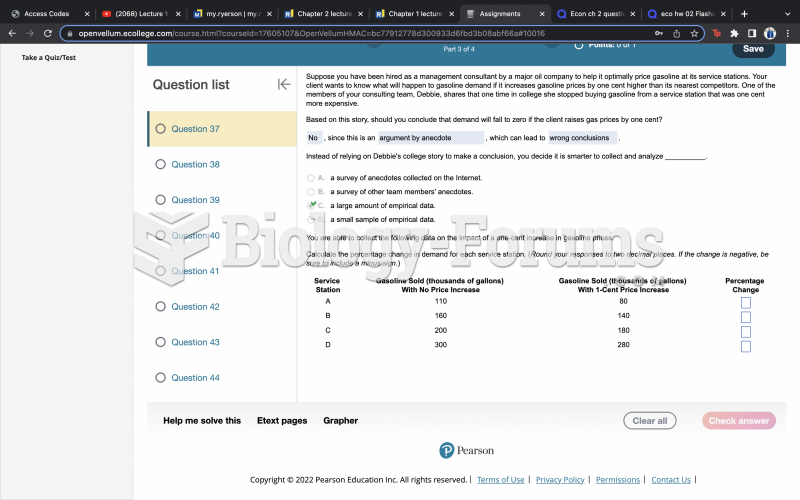|
|
|
There are more sensory neurons in the tongue than in any other part of the body.
Many supplement containers do not even contain what their labels say. There are many documented reports of products containing much less, or more, that what is listed on their labels. They may also contain undisclosed prescription drugs and even contaminants.
A strange skin disease referred to as Morgellons has occurred in the southern United States and in California. Symptoms include slowly healing sores, joint pain, persistent fatigue, and a sensation of things crawling through the skin. Another symptom is strange-looking, threadlike extrusions coming out of the skin.
Never take aspirin without food because it is likely to irritate your stomach. Never give aspirin to children under age 12. Overdoses of aspirin have the potential to cause deafness.
The average office desk has 400 times more bacteria on it than a toilet.
 Visual tracking of a pendulum by a normal control subject (top) and three schizophrenics. (Adapted ...
Visual tracking of a pendulum by a normal control subject (top) and three schizophrenics. (Adapted ...
 A) Male body louse. (Courtesy of the Centers for Disease Control and Prevention/Frank Collins, Ph.D. ...
A) Male body louse. (Courtesy of the Centers for Disease Control and Prevention/Frank Collins, Ph.D. ...





